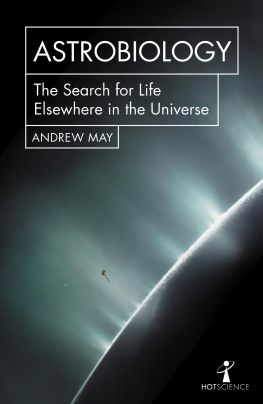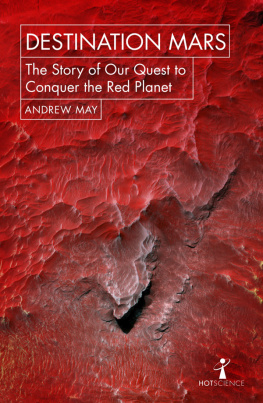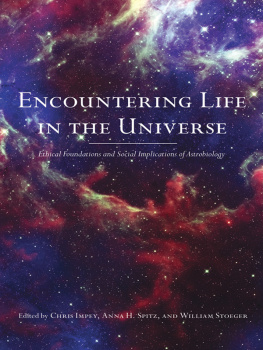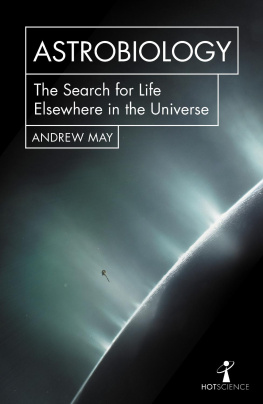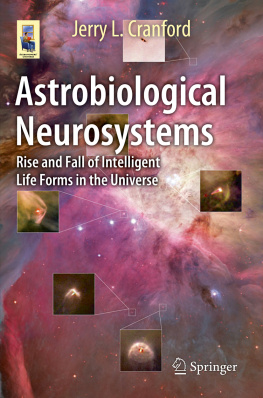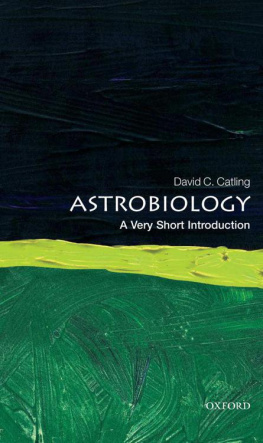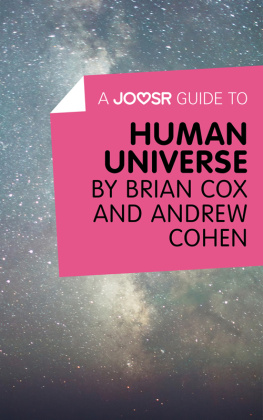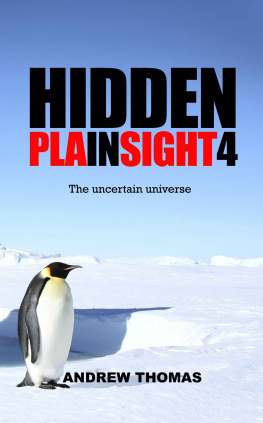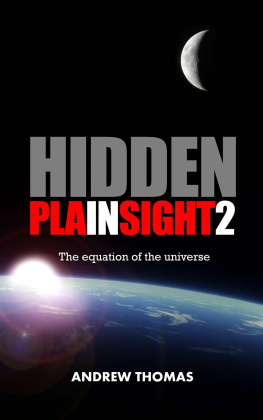Andrew May - Astrobiology: The Search for Life Elsewhere in the Universe
Here you can read online Andrew May - Astrobiology: The Search for Life Elsewhere in the Universe full text of the book (entire story) in english for free. Download pdf and epub, get meaning, cover and reviews about this ebook. year: 0, genre: Science. Description of the work, (preface) as well as reviews are available. Best literature library LitArk.com created for fans of good reading and offers a wide selection of genres:
Romance novel
Science fiction
Adventure
Detective
Science
History
Home and family
Prose
Art
Politics
Computer
Non-fiction
Religion
Business
Children
Humor
Choose a favorite category and find really read worthwhile books. Enjoy immersion in the world of imagination, feel the emotions of the characters or learn something new for yourself, make an fascinating discovery.
- Book:Astrobiology: The Search for Life Elsewhere in the Universe
- Author:
- Genre:
- Year:0
- Rating:4 / 5
- Favourites:Add to favourites
- Your mark:
- 80
- 1
- 2
- 3
- 4
- 5
Astrobiology: The Search for Life Elsewhere in the Universe: summary, description and annotation
We offer to read an annotation, description, summary or preface (depends on what the author of the book "Astrobiology: The Search for Life Elsewhere in the Universe" wrote himself). If you haven't found the necessary information about the book — write in the comments, we will try to find it.
Astrobiology: The Search for Life Elsewhere in the Universe — read online for free the complete book (whole text) full work
Below is the text of the book, divided by pages. System saving the place of the last page read, allows you to conveniently read the book "Astrobiology: The Search for Life Elsewhere in the Universe" online for free, without having to search again every time where you left off. Put a bookmark, and you can go to the page where you finished reading at any time.
Font size:
Interval:
Bookmark:
In July 2018, the UK tabloid newspaper the Daily Express carried a story dramatically headlined Aliens on Europa: NASA Hunts for Life Just 1 cm under Surface of Jupiters Moon. To reinforce the message, it was accompanied by an eye-catching composite image. On one side of the graphic was a photograph of Europa: an enigmatic-looking world, nothing like our own Moon, with a smooth surface of solid ice, criss-crossed by dark cracks. On the other side of the image, an artists impression of a typical alien: grey-skinned but otherwise distinctly humanoid in appearance, with a high-domed, hairless forehead, large eyes and delicate features.
Confusingly, however, the articles strapline read as follows:
Scientists hoping to find alien life on Jupiters moon Europa may not have far to search after a study revealed microbes could be surviving just one centimetre beneath the surface.
So whats going on? Is NASA going to Europa to hunt for big-brained, humanoid aliens, or for tiny little microbes? Delving further into the fine print, it turns out the answer is neither. The Express article was prompted not by a space mission thats about to take off, but by a clever piece of scientific deduction. It is widely accepted that, if life exists on Europa and yes, were most likely talking about microscopic organisms here its to be found in the ocean of liquid water believed to exist several kilometres below the icy surface. The new development the Express picked up on is the suggestion that chemical traces of life for example proteins or complex DNA-like molecules might be found near to the surface of the ice, making them much easier for a space probe to detect. This idea originated in a scientific study that had just been published in the journal Nature Astronomy, which came to the following conclusion:
These results indicate that future missions to Europas surface do not need to excavate material to great depths to investigate the composition of endogenic material and search for potential biosignatures.
This is real science, and in principle its no bad thing that it found its way into a widely read tabloid like the Daily Express. But the way the newspaper chose to report it and the way the popular media treats stories of this kind in general is likely to leave readers more confused than enlightened. Are they saying that NASA believes there are humanoid aliens on Europa? Why go all the way to Europa when the same newspaper also frequently reports anecdotal sightings of humanoid aliens here on Earth? Is NASA on the point of sending a space probe to look for life on Europa, or is that just an idea for the future? Why do scientists keep going on about extraterrestrial microorganisms, when everyone knows that aliens are pretty much like us except for their big eyes and high foreheads?
All these things and many more will be clarified in the course of this book. Astrobiology is a wide-ranging subject, dealing with the possibility of life beyond Earth from every conceivable angle. To start with, however, lets kick off with a much simpler question.
From our perspective on the surface of the planet, its obvious theres life on Earth. From out in space, too, its not that difficult to detect. The night side of the planet is lit up by city lights, there are thousands of small artificial satellites in orbit, the radio spectrum is buzzing with structured signals that have no natural explanation, and the atmosphere is laced with industrial pollutants.
But all those things have existed for just a century or so: a tiny fraction of the Earths lifetime, which is about 4.5 billion years. Nevertheless, life at a less obvious level has existed for a significant fraction of that time, perhaps as much as 4 billion years. Until just under a billion years ago, all of that life (and the vast majority of it even today) took the form of tiny single-celled organisms the microbes that scientists are so fond of talking about. The following table shows how, over the course of time, increasingly complex forms gradually evolved and were added to the mix of life on Earth.
Milestones in the evolution of life on Earth (all dates are approximate)
| Time before present (in millions of years) | Evolution of life on Earth |
| 4,500 | Formation of the Earth |
| 4,000 | First single-celled life forms |
| 1,700 | Microscopic multicellular organisms |
| 600 | Small marine animals; seaweed |
| 450 | Fish; land plants; insects |
| 350 | First land vertebrates (amphibians); trees |
| 180 | Jurassic dinosaurs; flowering plants |
| 50 | First lemur-like primates |
| 3.5 | First tool-making hominids |
| 0.3 | Homo sapiens |
This means the question of life on Earth is a matter of definition. To a scientist, life includes any kind of living thing even if it can only be seen through a high-power microscope. By that definition, Earth has been home to life for almost 90 per cent of its history. On the other hand, people brought up on a diet of sci-fi movies and tabloid stories about UFO encounters are more likely to equate life with a technologically savvy civilisation in which case that 90 per cent figure drops all the way down to 0.000002 per cent.
If were going to look for life on other Earth-like planets, what are the relative chances of finding it by those two definitions? We can make a rough estimate by picking random snapshots of the Earth at different points in its 4.5 billion-year history. On that basis, the chance of finding life by the ufologists or sci-fi fans definition is so tiny as to be virtually zero. By the scientists definition, on the other hand, the chances are pretty good.
So lets look a bit more closely at that scientists definition of life. The nature of life turns out to be surprisingly difficult to pin down, and precise definitions tend to vary between specialists working in different branches of science. As far as astrobiology is concerned, a good starting point is the working definition devised by NASA in the 1990s:
Life is a self-sustaining chemical system capable of Darwinian evolution.
Thats refreshingly concise, but it packs a lot into a small number of words. The first part, self-sustaining chemical system is clear enough. But the latter part, capable of Darwinian evolution, hides a lot of detail. It doesnt just mean that our self-sustaining chemical system has to be able to evolve, or change its form over time. First, theres an implicit assumption that the change occurs over successive generations, each of which is born, grows and dies. Then theres that word Darwinian after Charles Darwin, the Victorian naturalist who did far more than suggest that living species evolve. He argued that they do this for a reason to adapt to the changing circumstances of their environment and that they do so by means of natural selection, or survival of the fittest.
The beauty of this definition is that it encompasses everything from the single-celled organisms that emerged on Earth 4 billion years ago and may possibly be hiding under Europas ice sheets via semi-civilised primates like ourselves, all the way up to super-advanced lifeforms we can hardly even imagine. Astrobiology the subject of this book deals with the possibility of life beyond Earth wherever it falls in that spectrum. As the astro prefix implies, its essentially a sub-branch of astronomy, using the same sort of telescopes, space probes and theoretical techniques that astronomers apply to any other facet of outer space.
Earlier in this chapter (page 2) we saw a quote from a scientific paper featuring a lot of multisyllabic words. One of them, biosignatures, will turn out to be one of the most important words in this book. A moment ago, we saw how all the obvious ways an outside observer might detect life on Earth artificial lights, satellites, radio signals, etc. relate to our own civilisation. But there are other, subtler, ways of detecting more primitive lifeforms and these are collectively known as biosignatures. Most importantly, living organisms produce, as waste products, tell-tale chemicals that would be very difficult to account for in terms of non-living processes. These chemical signatures are potentially detectable to astrobiologists through telescopes or spacecraft-based sensors.
Font size:
Interval:
Bookmark:
Similar books «Astrobiology: The Search for Life Elsewhere in the Universe»
Look at similar books to Astrobiology: The Search for Life Elsewhere in the Universe. We have selected literature similar in name and meaning in the hope of providing readers with more options to find new, interesting, not yet read works.
Discussion, reviews of the book Astrobiology: The Search for Life Elsewhere in the Universe and just readers' own opinions. Leave your comments, write what you think about the work, its meaning or the main characters. Specify what exactly you liked and what you didn't like, and why you think so.

